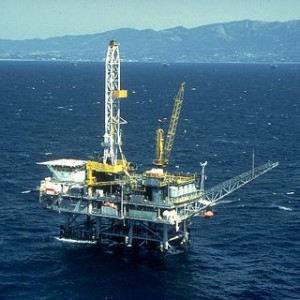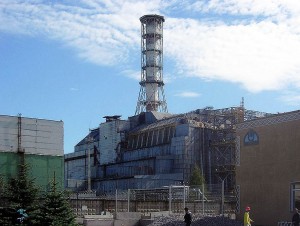 Well, now it happened. An oil rig sunk after an explosion in the Gulf of Mexico. It was another one of those typical accidents that, in theory, cannot happen. And following the laws of statistics, it did happen.
Well, now it happened. An oil rig sunk after an explosion in the Gulf of Mexico. It was another one of those typical accidents that, in theory, cannot happen. And following the laws of statistics, it did happen.
Nonetheless, these days even the most remote regions of this planet are cleared for exploration if there is a chance of finding oil. Nobody thinks about the risk and cost. From the economical point of view, it will probably be profitable.
We do this regardless of us knowing that all we can do is move the end of the oil age a little bit further into the future. In Exchange, we are pumping more and more poisonous gasses into the atmosphere.
That hurts.
 What hurts even more, however, is that the next catastrophe in a nuclear plant will certainly come. We cannot say if it will happen in one year, in five years, or in ten years. It might even take 20 or, if we are very lucky, 50 years. Yet there is no doubt that it is going to happen.
What hurts even more, however, is that the next catastrophe in a nuclear plant will certainly come. We cannot say if it will happen in one year, in five years, or in ten years. It might even take 20 or, if we are very lucky, 50 years. Yet there is no doubt that it is going to happen.
Unimpressed by the risk, we continue to produce nuclear power, thereby creating more and more radioactive waste. The radioactivity will even outlive the pyramids.
The alternative would be a new way of thinking, a little more modesty and a little less comfort. But that seems to be impossible. Consequently, we give up the struggle against our ignorance, our sluggishness and our lack of courage to change things.
All that remains for us is the cynical hope that the next “GIA” (greatest imaginable accident) in a nuclear plant will not happen close to home (Isar1/Ohu). Instead, we want it to happen far away, like in the Gulf of Mexico.
RMD
(Translated by EG)
P.S.
The picture of the oil platform is a public domain in the United States, because it was taken by an employee of the federal government while on duty. Consequently, it is the property of the US Government (Werk der Regierung der Vereinigten Staaten).
The second picture showing Chernobyl is also from Wikipedia. You can find it in the central media archive Wikimedia Commons. The copyright is held by Carl Montgomery.

